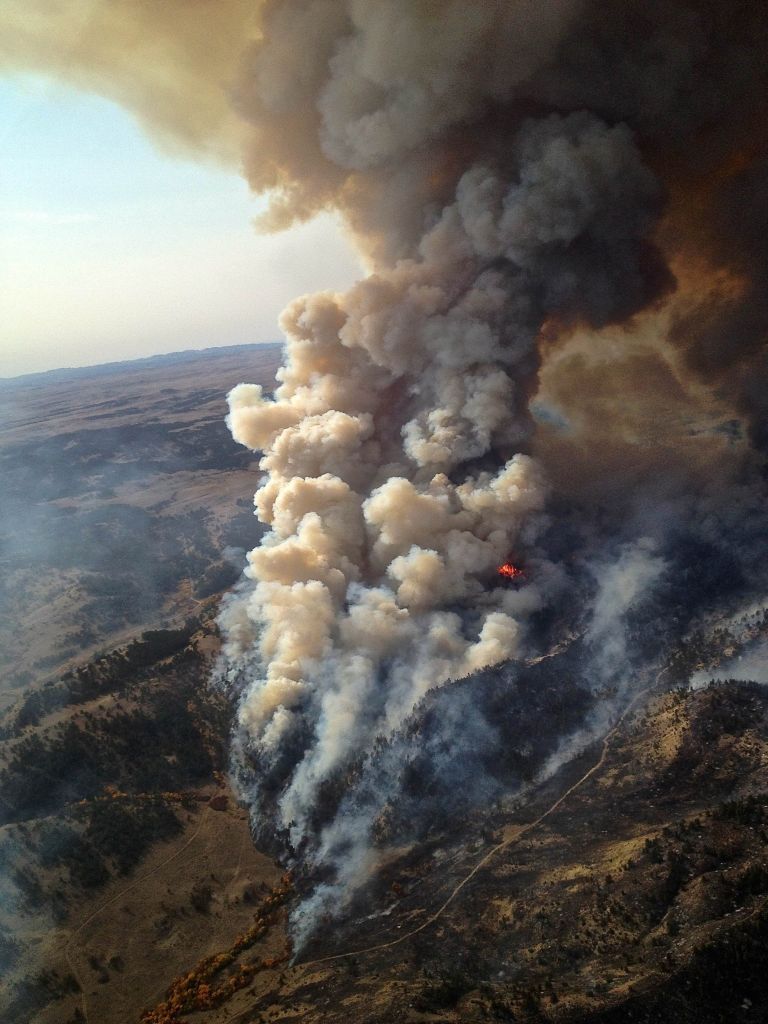
2012 Wildfire Season Hits 2nd-Largest Area Since 1960s

Although there are still wildfires going strong in several states, wildfire season is almost over for most of the country. And this fire season has been a bad one.
Since the beginning of the year, wildfires have burned through 14,065 square miles (36,430 square kilometers) — an area the size of Maryland. That's the second-largest area burned, year-to-date, since detailed fire records began being recorded in the 1960s, according to government records.
"It's been a busy year," said Ken Frederick, a spokesman with the National Interagency Fire Center in Boise, Idaho, which collects data on fires and helps coordinate efforts to fight them.
With more than two months left to go, this year's fire season could become the worst ever in terms of area burned. But that seems unlikely, given current weather patterns, according to the wildfire experts OurAmazingPlanet spoke with.
Fire on the open plains
The main reason why such a large area burned this year is that more fires than average occurred in grasslands and open scrublands, said National Weather Service meteorologist Ken Waters. These kinds of fires tend to burn more quickly than forest fires, and take up more land. "Fire can move through grass almost as fast as it can burn gasoline," he told OurAmazingPlanet.
These grasslands also tend to be sparsely populated. That helps explain why the fires weren't more destructive or didn't cause more fatalities. Although an exact count of total wildfire fatalities wasn't immediately available, Frederick said it was below average this year. A total of 11 firefighters died this year, which is fewer than average, Frederick said.
Sign up for the Live Science daily newsletter now
Get the world’s most fascinating discoveries delivered straight to your inbox.
Fires have torched 4,191 structures so far in 2012; of those, 2,196 were residences, which is an average or slightly-above-average amount, he said.
Colorado was one of the hardest-hit states, where more than 600 homes were destroyed, he said. The worst incident in that state was the Waldo Canyon Fire, estimated to be the costliest fire in the state's history. That blaze destroyed 347 structures, mostly homes, according to InciWeb, a government website that tracks wildfires.
The wildfire season began, as it usually does, in the southern United States, and migrated west, with bad fires throughout the Southwest in the spring and early summer. Many of these fires were dampened by the arrival of the North American monsoon, which ferries moistures northwest from the Gulf of Mexico.
Primed for fire
Fires then generally migrated north and west. Much of the western and southwestern United States was primed for fire due to an extended, nearly decadelong drought, an unusually warm winter and low levels of snow pack, Waters said. This left grasses and plant matter extremely dry and ready to burn. The lack of snow also didn't compact these grasses as much as usual, making them easier to burn, Waters said.
Besides the dryness, much of the West was gripped by extreme heat, exacerbated by dry ground; wet soil absorbs some energy as water turns to vapor, preventing extreme highs, but parched landed offers no such relief, said Jeff Weber, a scientist with the University Corporation for Atmospheric Research in Boulder, Colo.
Later in the summer, more fires were seen in the Northwest, where drought and winds gradually dried up forests and areas of high elevation that are normally more resistant to fires, Frederick said.
As of Friday (Oct. 19) there were still 11 large fires burning in nine states, mostly in the West and Northwest.
But today (Oct. 24), a weather system has brought cold, moist air to the West Coast, and begun dropping considerable amounts of precipitation throughout the area, Weber said. "That will bring an end to the fire season," he said.
Santa Ana wild card
However, the chance remains for blazes in Southern California, which, unlike the rest of the country, is susceptible to blazes late in the year, thanks tothe Santa Ana winds. These hot, dry winds can gust up to 80 mph (129 kph) in high mountain passes and stem from the development of a high pressure system throughout the Great Basin (an area covering Nevada, parts of Utah, California and Oregon). But their strength varies dramatically each year. If they're strong enough, they can quickly dry out vegetation throughout Southern California, setting the stage for big blazes.
This year, however, it doesn't look there will be strong Santa Ana winds, at least for the next couple weeks, although conditions could change quickly, Waters said.
Strangely, there were only 50,651 blazes this year, the fewest in a decade, year-to-date. Frederick said he doesn't know exactly why that would be, although it clearly didn't reduce the amount of area burned, thanks to the location of fires.
The worst year for wildfires, in terms of area burnt, was 2006, when fires charred 14,690 square miles (38,020 square km).
"It's been a bad, tough year, but it hasn't been the worst, thank goodness," Frederick said.
Reach Douglas Main at dmain@techmedianetwork.com. Follow him on Twitter @Douglas_Main. Follow OurAmazingPlanet on Twitter @OAPlanet. We're also on Facebook and Google+.











